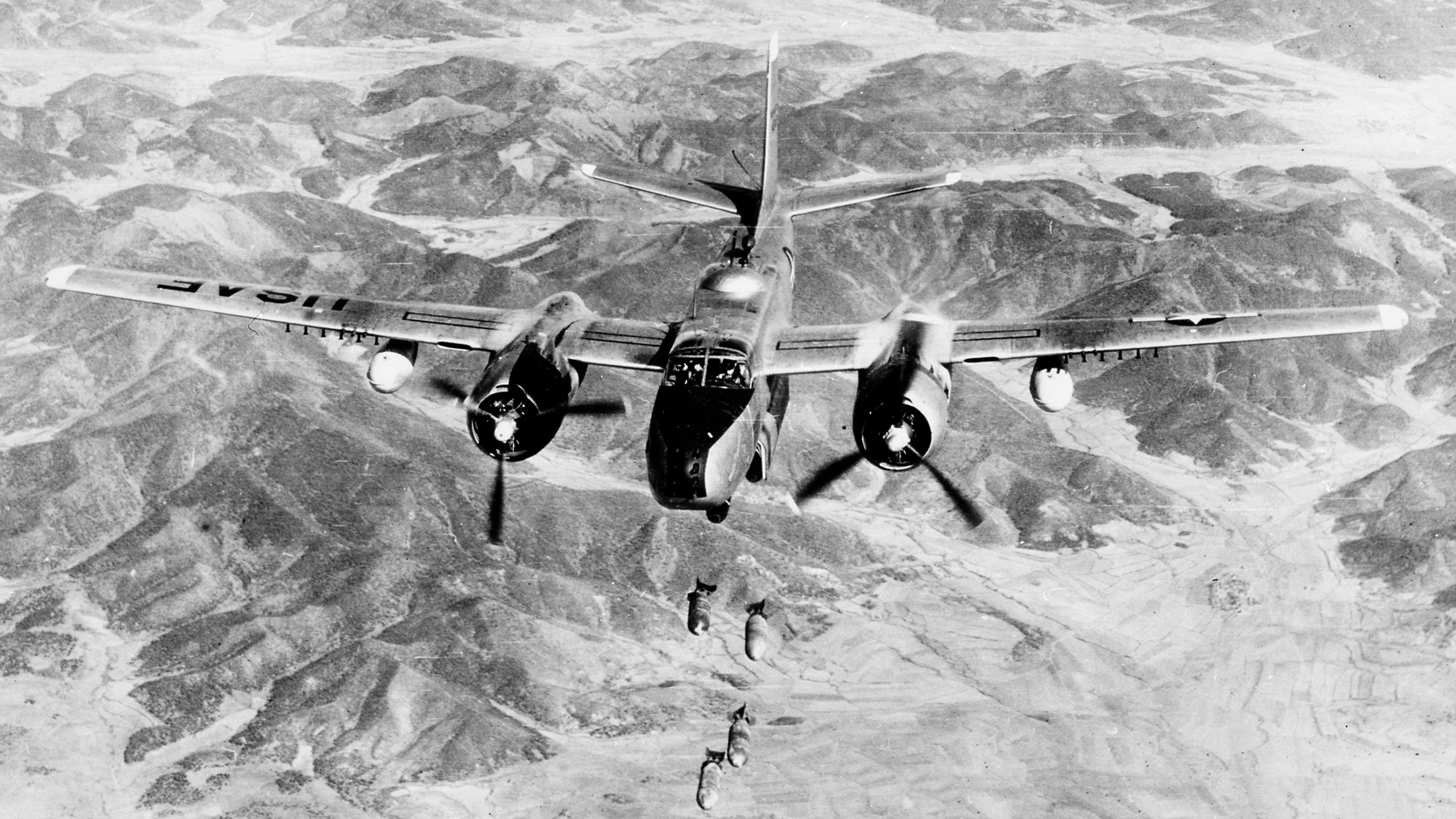Editor’s Note: The Douglas A-26 Invader was a light bomber that entered service during World War II and is a different plane from the Martin B-26 Marauder. However, confusion sometimes develops because the Invader was re-designated the B-26 when the Martin plane was retired after WWII. Starting in 1948, the Douglas plane was known as the B-26 Invader.
Modularity is the holy gospel for today’s military weapons. In a perfect world, a single common chassis can be adapted to be all things for all users. One might be forgiven for believing that this was an Information Age mantra unique to the world of small arms. However, back in 1942, the Douglas Aircraft Company produced a twin-engine attack plane that was indeed a flying modular weapon system.
A Most Chaotic Time
In the summer of 1942, the entire world was aflame. Never before or since has Planet Earth seen such unfettered carnage. Most every major nation state and people group were dragged into what truly was an apocalyptic world war. As a result, the world’s industrial base strained to produce the most capable weapons possible. The end result was engineering evolution on an unprecedented scale.
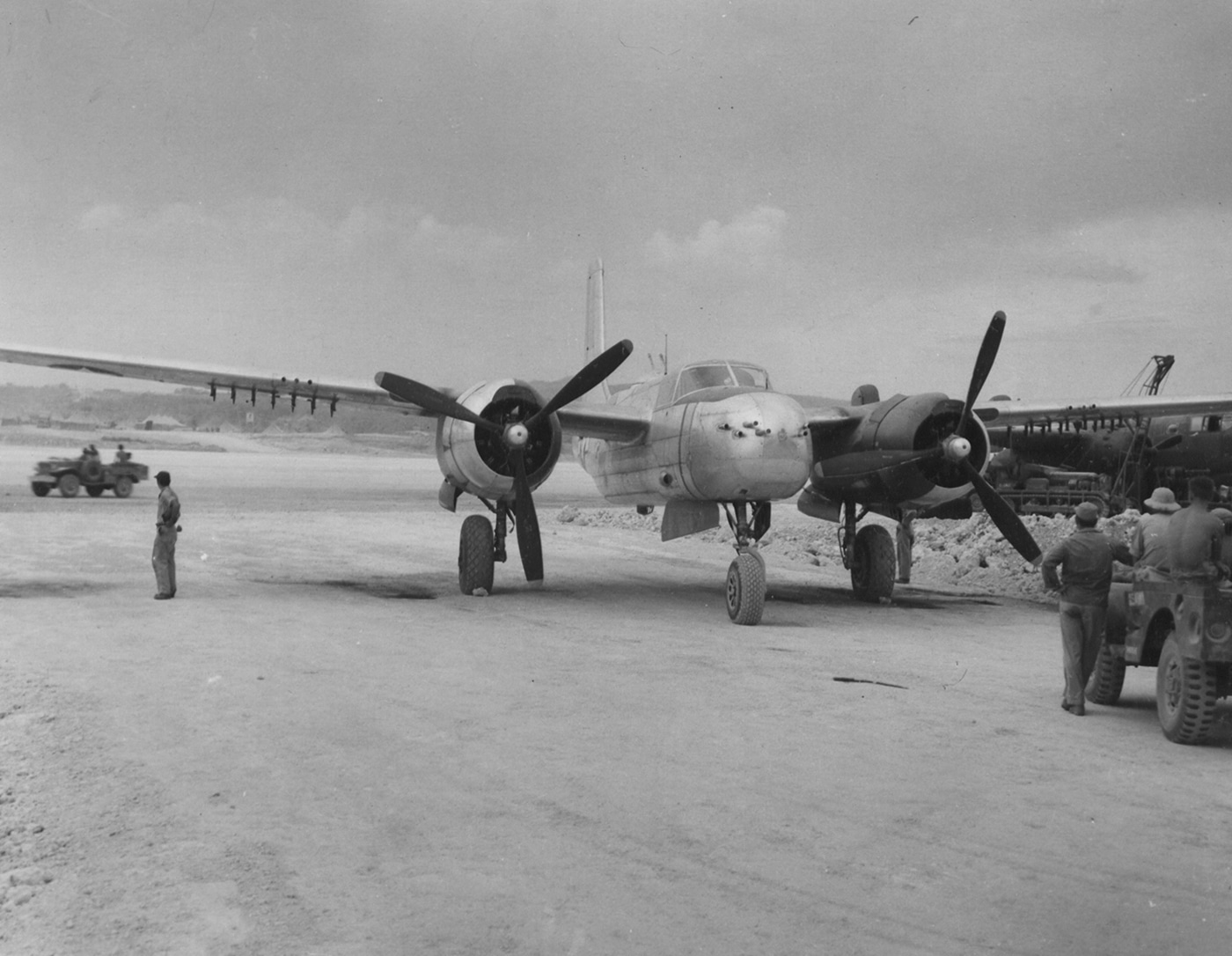
America was rightfully known as the Arsenal of Democracy. During its course, nobody even came close to our manufacturing capacity. At the height of production, we were churning out 65,000 M1 carbines per day. Truth be known, the war was decided the moment the first bomb dropped on Pearl Harbor. It just took another three and a half long years to work out the details.
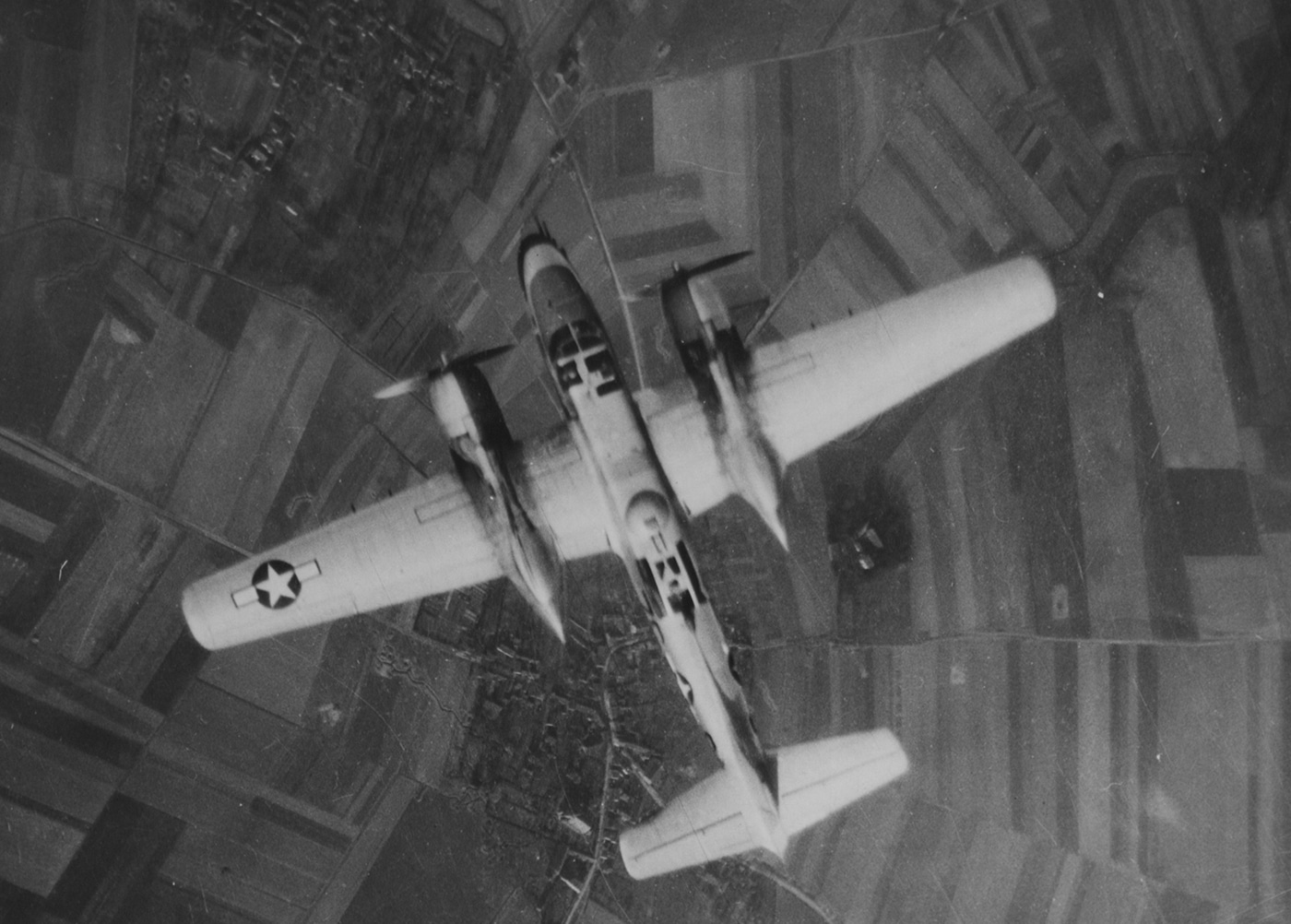
At the outset of the war, the U.S. Army Air Corps was equipped with B-25 Mitchell and A-20 Havoc medium bombers. However, with the state-of-the-art in aeronautical engineering advancing at a blistering pace, it soon became obvious that we could do better. As a result, a design team at Douglas Aircraft Company embarked upon a program to create a replacement for the A-20. The resulting XA-26 prototype first flew on 10 July 1942. They christened the sleek new warplane the Invader.
A-26 Invader Details
The A-26 was powered by a pair of Pratt and Whitney R-2800-27 Double Wasp 18-cylinder air-cooled radial engines. Sporting a max takeoff weight of 35,000 pounds and a top speed of 359 mph, the A-26 offered blistering performance for its day. The basic airframe included a generous enclosed bomb bay as well as matching remote-controlled two-gun powered turrets — one on top and one on bottom.
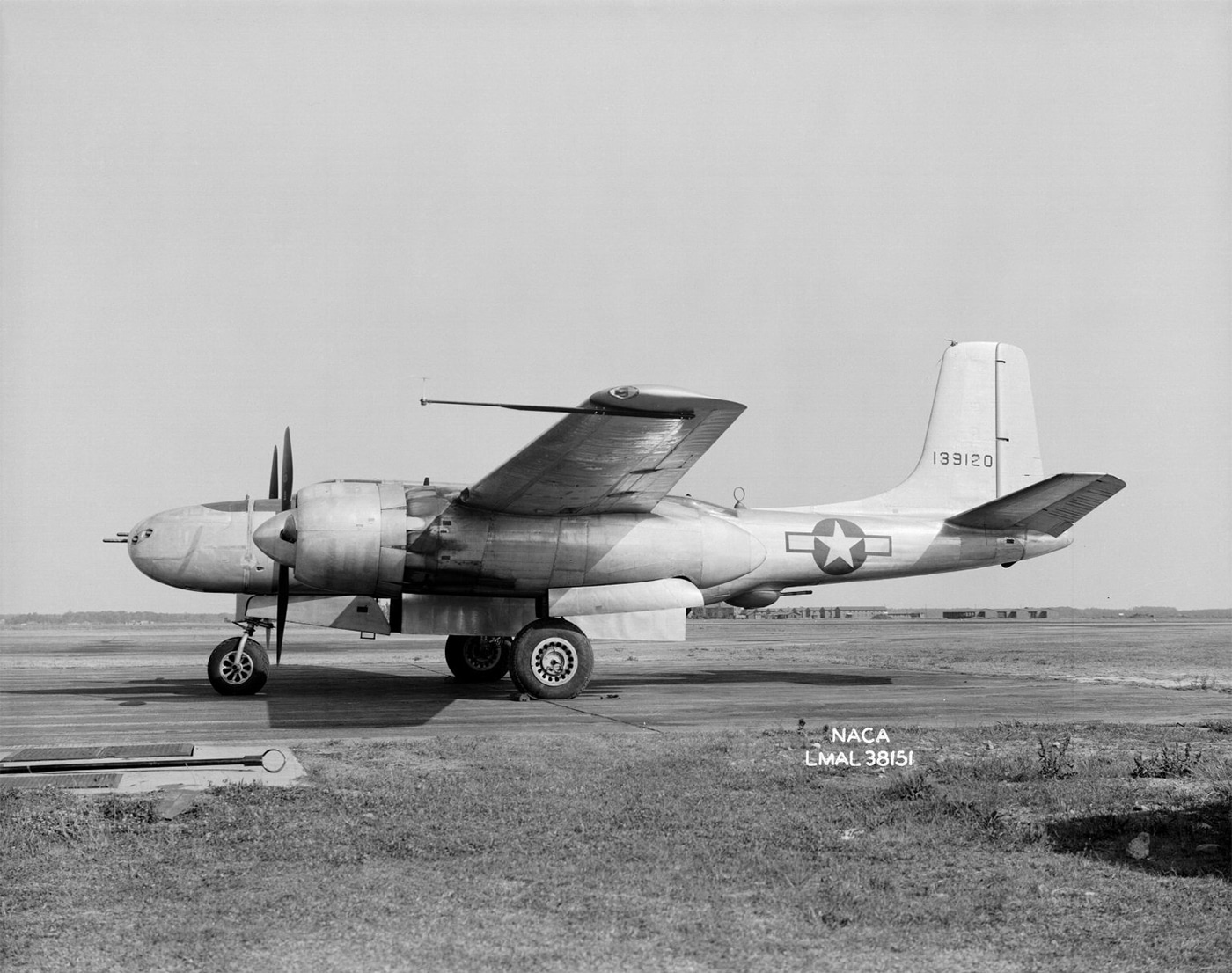
Unlike most American medium bombers, the A-26 was designed to be flown by a single pilot. Some variants had two sets of flight controls. Others only had one. While this did represent a departure from convention for American warplanes, most all British bombers, to include the heavy four-engine Lancasters and Wellingtons, were single-pilot designs.
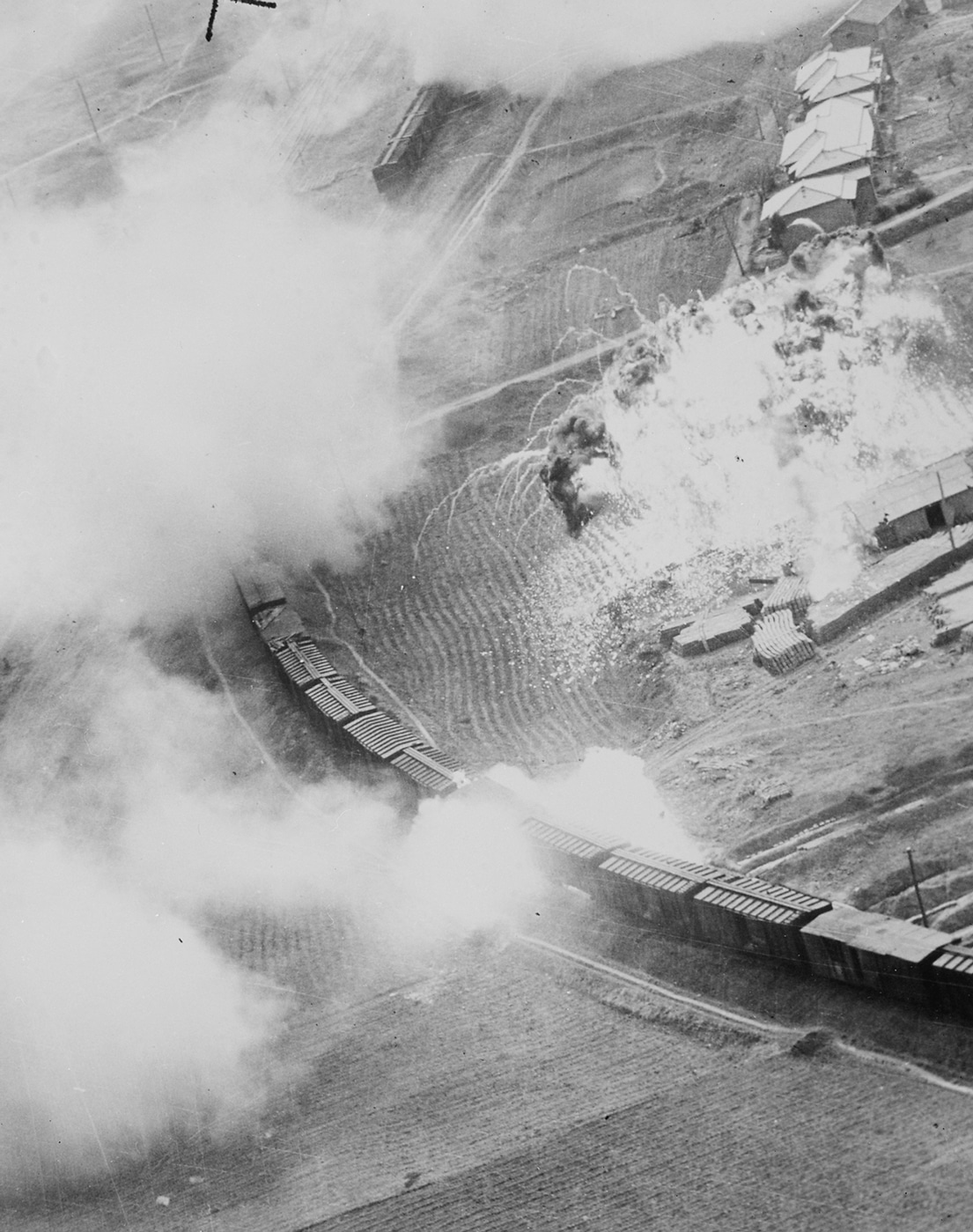
What made the A-26 so exceptionally versatile was the modular nature of its nose assembly. In its bomber mode, the nose featured a glassed-in position for a bombardier and Norden bombsight. In flight, the bombardier could crawl underneath the instrument panel on the right side of the cockpit to access the bombardier’s position in the nose.
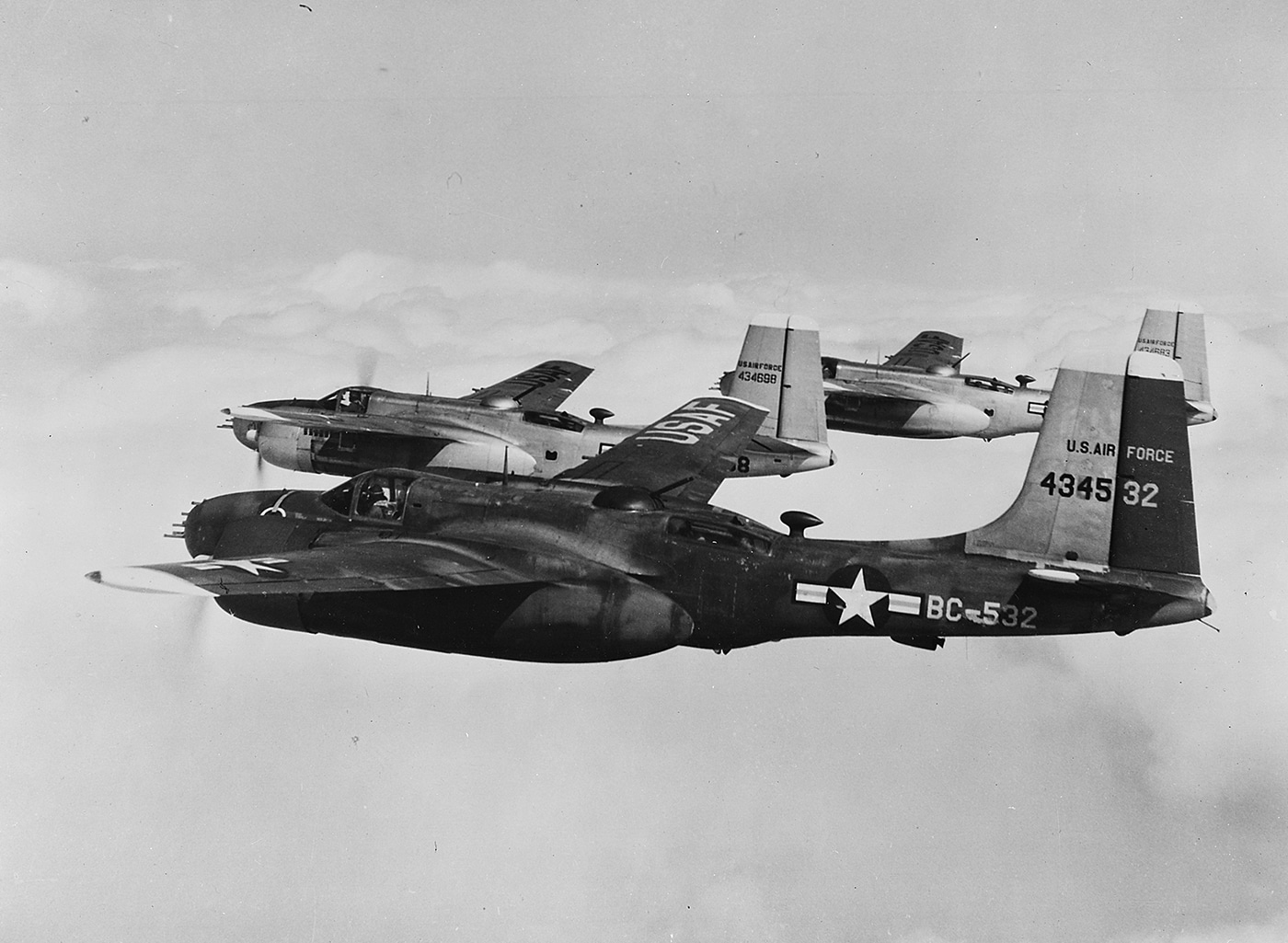
This nose assembly could be swapped out for a gun pod that contained either six or eight M2 Browning .50-cal. machine guns. This solid nose also included the ammunition feed systems for these weapons. In addition, there were typically either six or eight additional M2 guns located in wing mounts firing outside the propellor arc.
The twin remote control turrets, each bearing a pair of M2 .50-cal. machine guns, were designed to be serviced by a single gunner and provide essentially all-around coverage for the aircraft. The gunner sat in the rear of the fuselage separated from the cockpit by the bomb bay. There was a tractor seat located behind and between the two front crew stations. The gunner could transit back and forth between the front and rear of the plane so long as the bomb bay was empty. Otherwise, he was stuck in the back.

The sighting system on the gun turrets was remarkably advanced for its day. However, it didn’t work terribly well. The gunner was equipped with a periscopic gunsight that controlled both turrets. Controls consisted of a pair of handles on the side of a central column. Moving these handles gimbaled the sight that, in turn, tracked the guns. As the gunner tracked targets from above to below the airplane, a mirror in the system automatically flipped to provide a seamless image in the gunner’s sight.

Throughout it all, the guns sort-of followed the gunner’s gaze. A primitive mechanical fire control computer helped with parallax and environmental factors. While mechanically inspired, the system was difficult to maintain and tough to use.
Off to War
The A-26 first saw combat in late June of 1944 during an attack against Japanese-held positions near Manokwari. These first crews did not care for the plane, citing poor downward visibility and the fact that the two massive engines kept the pilot from acquiring ground targets. General George Kenney, the commander of Far East Air Forces, rejected the aircraft out of hand.
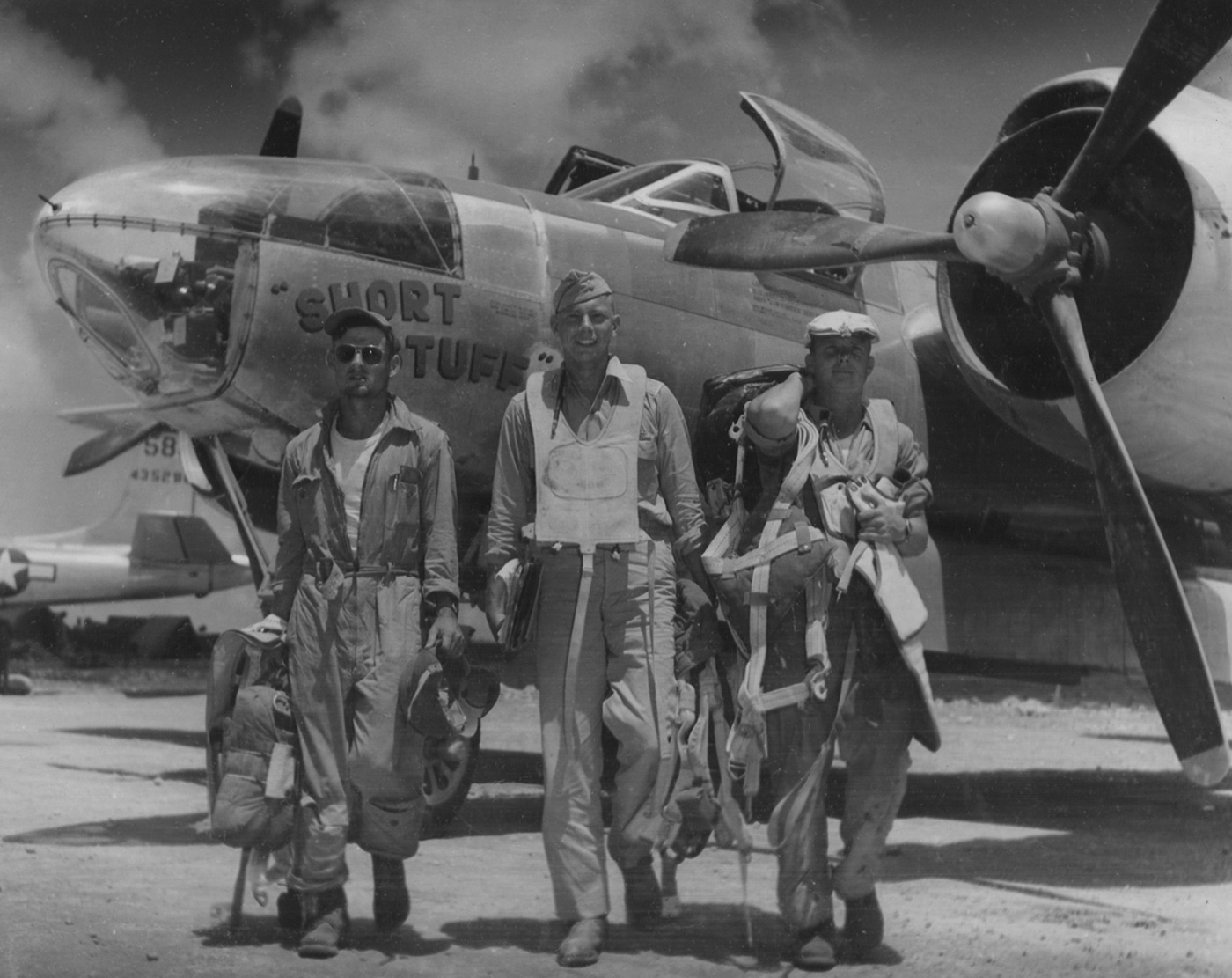
The Invader fared better in Europe. The plane flew its first combat mission in the ETO (European Theater of Operations) on 6 September 1944, and suffered no losses. The Ninth Air Force eventually replaced all of their A-20 Havocs and B-26 Marauders with Invaders by war’s end. The Invader’s final tally with the Ninth was 11,567 sorites, 18,054 tons of bombs delivered, and seven confirmed enemy aircraft shot down for the loss of 67 A-26 light bombers in combat.
A New Name and a New War (or Two)
Once the B-26 Marauder medium bomber was retired, the Invader was redesignated the B-26. It went on to serve with distinction throughout the Korean War. Operating out of bases both in Japan and on the Korean peninsula, Invaders took the fight to the enemy throughout the conflict.

By the end of the Korean War, the B-26 Invader had been credited with the destruction of 38,500 ground vehicles, 3,700 railway trucks, 406 locomotives, and seven enemy aircraft destroyed on the ground. B-26 Invaders executed the last bombing mission of the war, striking enemy targets some 24 minutes prior to the signing of the armistice agreement on 27 July 1953.

The B-26 also saw action in Vietnam under the auspices of the U.S.A.F., the South Vietnamese Air Force, and the C.I.A. In an interesting twist, the B-26K, an updated version of the plane designed for counter-insurgency missions, was renamed to A-26A for a deployment to Thailand.

War Story
On 14 September 1951, a B-26 Invader piloted by Captain John Springer Walmsley launched at night as part of Operation Strangle. With Chinese and North Korean supply trucks and trains coming south under cover of darkness, Allied B-26s had been equipped with powerful 3-million candlepower arclights to help illuminate targets for interdiction. However, enemy commanders expected these attacks. Their supply trains veritably bristled with anti-aircraft guns.
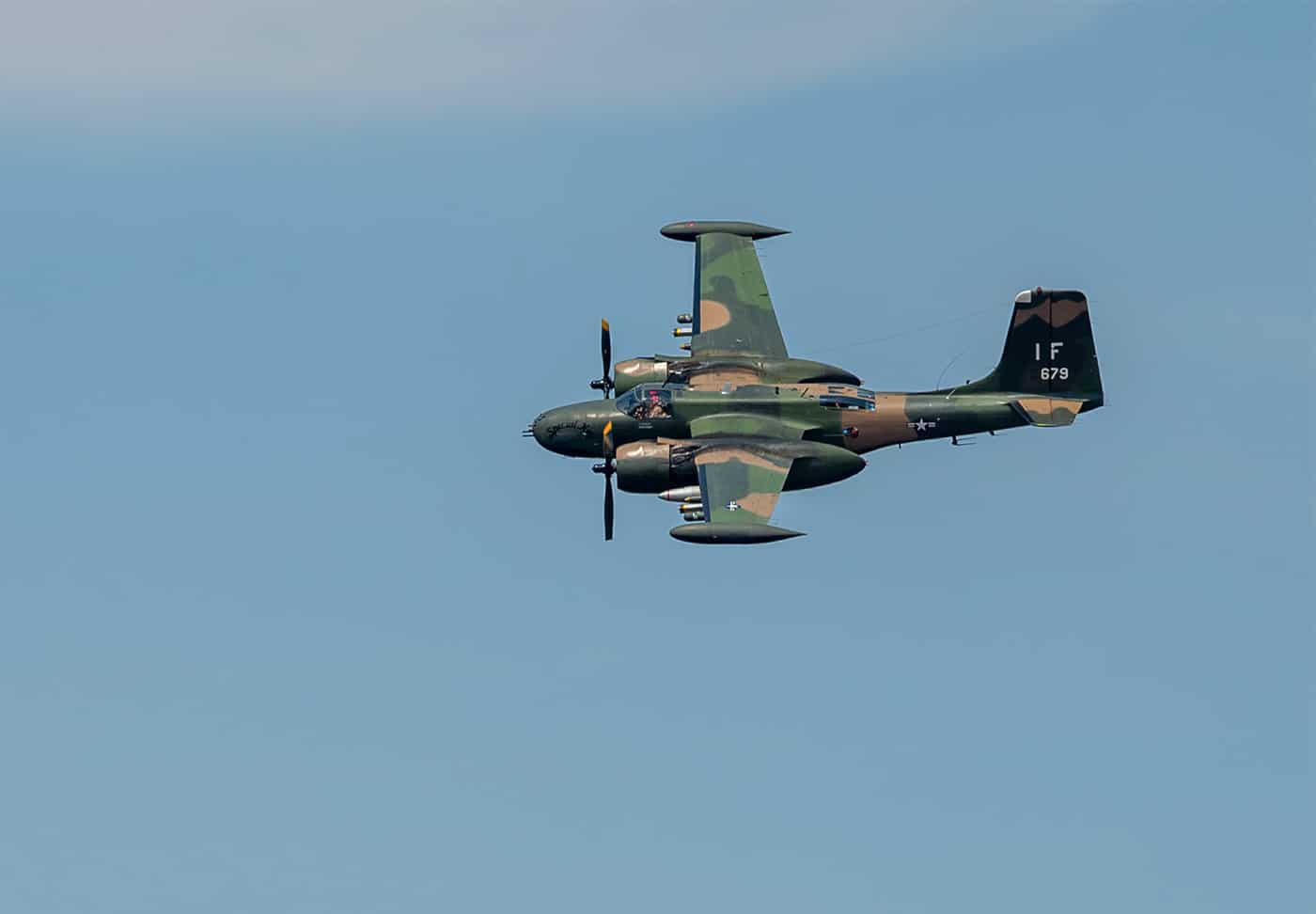
Walmsley located a Chinese supply train and attacked using his .50-cal. machine guns and fragmentation bombs. After expending his bomb load, the train was damaged but not destroyed. Cpt. Walmsley remained on station and called another Invader in via radio.

Once the sister plane arrived, Walmsley set up for a slow straight approach and illuminated the train for his wingman to engage. On his third pass, the train was finally destroyed, but Walmsley’s B-26 had taken murderous ground fire. Now badly damaged and trailing fuel, the crippled Invader caught fire and crashed in a particularly mountainous region. One crew member, Master Sergeant George Morar was badly injured but survived. The other three Americans onboard were killed. Cpt. Walmsley was awarded the Medal of Honor for his selfless actions.
Ruminations
The A-26 Invader was designed under the most intense of circumstances but ended up being an exceptionally successful warplane. Used across three wars and eventually as a civilian firefighting platform and executive transport, the Invader outlasted most of its competition. The plane was not retired from Air Force Reserve service until 1972. Fast, reliable, versatile and tough, the modular A-26 was the Swiss Army knife of WWII attack planes.
Editor’s Note: Please be sure to check out The Armory Life Forum, where you can comment about our daily articles, as well as just talk guns and gear. Click the “Go To Forum Thread” link below to jump in and discuss this article and much more!
Join the Discussion
Read the full article here




